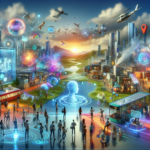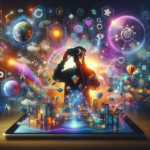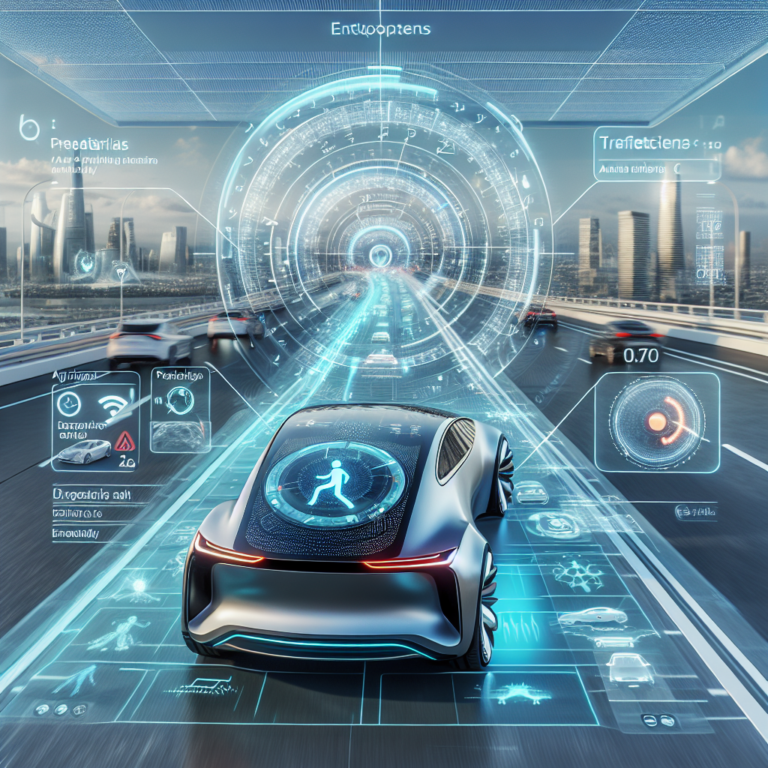Tesla XR Integration: Pioneering Enhanced Driver Assistance
As the automotive landscape rapidly transforms, the need for cutting-edge technologies grows to improve driver safety, comfort, and performance. One powerful innovation on the horizon is Extended Reality (XR), encompassing Virtual Reality (VR), Augmented Reality (AR), and Mixed Reality (MR). This article explores the exciting possibilities if Tesla were to embrace XR technology to enhance driver assistance.
The Current Landscape of Tesla’s Autonomous Driving
Tesla leads the way in autonomous driving technology with bold visions for robotaxis and self-driving vehicles. Their forthcoming ride-hailing service promises the ability to summon driverless cars while managing in-car settings and tracking vehicle locations in real-time.
Integrating XR technology could elevate Tesla’s autonomous and semi-autonomous driving capabilities significantly.
Enhancing Driver Assistance with XR
Real-Time Navigation and Alerts Using XR
Imagine a future where your Tesla’s windshield acts as an AR display, showcasing real-time navigation, traffic updates, and urgent safety alerts. This could be made possible through AR technology, which overlays crucial digital information onto your view of the real world. For instance, AR could highlight potential hazards like pedestrians crossing the road or nearby construction zones, thus bolstering the driver’s situational awareness.
Utilizing Virtual Reality for Autonomous Vehicle Training
Tesla already leverages VR to train its Optimus AI robot, providing a pathway to train autonomous vehicles as well. VR simulations can recreate various driving scenarios, allowing the AI to learn and adapt in a controlled setting. This approach could tremendously enhance the reliability and safety of Tesla’s autonomous driving systems.
Transforming In-Car Experiences Through Mixed Reality
Mixed Reality (MR) can redefine the in-car experience by seamlessly merging physical and digital elements. For example, MR can allow passengers to dive into immersive entertainment during extended trips, similar to Audi’s holoride technology. This immersive VR encounter adjusts with the car’s movements, creating a lively and connected environment for all passengers. 🎮
Revolutionizing Safety Features with XR
Predictive Safety Scenarios with XR Innovation
One of the remarkable abilities of XR is simulating various driving situations, including possible accidents. This capability enables manufacturers to test and refine safety features before actual vehicle prototypes are built. By employing such technology, Tesla’s vehicles could predict and react to hazards more proficiently, improving passenger safety. For example, Volvo’s mixed reality test drives let drivers experience realistic elements on the road, aiding in the enhancement of safety protocols.
Providing Real-Time Driver Feedback
XR technology can offer real-time feedback to drivers, assisting them in correcting habits and improving overall safety. For instance, AR displays may provide immediate driving tips, suggesting optimal speed adjustments or help with lane positioning based on current conditions.
Integrating XR with Existing Tesla Features
Enhancing Autopilot with XR
Tesla’s Autopilot is a state-of-the-art driver-assistance feature that can be further enriched through XR. By incorporating AR and MR, Tesla could deliver a more intuitive and engaging interface that helps drivers understand and act on Autopilot’s feedback and alerts effectively.
Making the Ride-Hailing Experience Unique
For Tesla’s anticipated ride-hailing service, XR can create an engaging and interactive journey for passengers. AR can provide informative elements like route details, estimated arrival times, and even entertainment options during the trip, enhancing the overall riding experience. 🚗
Overcoming Challenges with XR Integration
Addressing User Comfort and Safety
One of the main concerns of incorporating XR technology is ensuring user comfort and safety. For example, using VR headsets while driving clearly poses safety risks and is discouraged by transportation authorities. However, when AR and MR are implemented effectively, they can elevate the driving experience without jeopardizing safety.
Evaluating Technical and Cost Implications
Integrating XR technology will necessitate substantial investments in both hardware and software. Tesla must ensure that these XR systems are dependable and effectively woven into the existing vehicle systems. While the financial impact of such advanced technology may affect vehicle pricing, the long-term benefits could outweigh the initial costs.
Exploring Future Possibilities with XR
Collaborative Development for XR Advances
Tesla could consider partnerships with other industry giants, such as Audi, BMW, and Volvo, which are already utilizing XR in various areas. Such collaborative efforts could expedite the development and acceptance of XR technology throughout the automotive industry.
Diverse Revenue Streams Through XR
By integrating XR-enhanced features, Tesla may discover new revenue opportunities. For example, premium XR experiences could be available as subscription services, creating additional income for the company.
The integration of XR technology into Tesla’s vehicles promises a wealth of possibilities for enhancing driver assistance, safety, and the overall driving experience. Tesla’s exploration of XR can not only meet current demands but potentially chart a path toward a safer, more enjoyable driving future, distinguishing it further from competitors in the automotive industry.




0 Comments